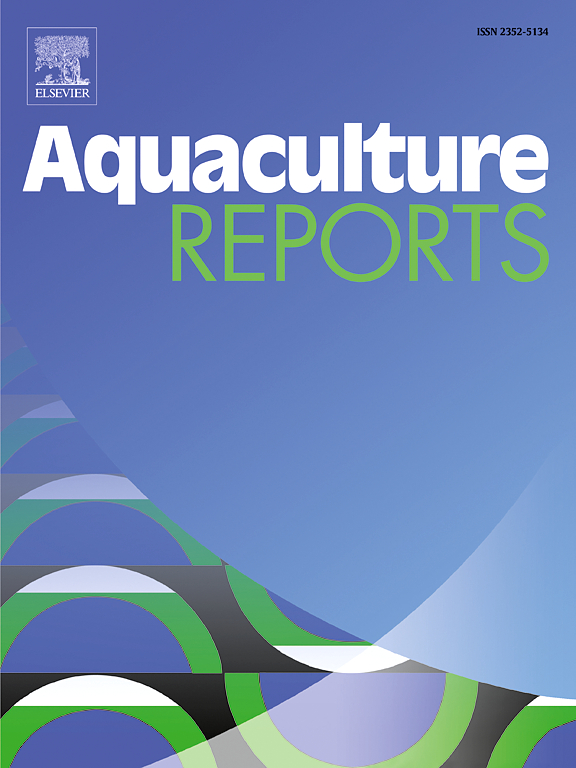Effects of Probiotics Red Yeast Rhodotorula paludigena CM33 on enhancing color pigmentation, antioxidant activity, immune response, intestinal microbiota, and growth in a commercial ornamental fish: Flowerhorn fish
IF 3.2
2区 农林科学
Q1 FISHERIES
引用次数: 0
Abstract
The application of novel feed additives, including yeast-based probiotics, has emerged as a strategy to enhance growth, health, and aesthetic appeal in ornamental fish. This study evaluated the probiotic properties of red yeast Rhodotorula paludigena CM33 in flowerhorn fish (initial weight 9.81 ± 1.25 g). Forty fish were randomly distributed into individual glass tanks and subjected to four feeding treatments: a non-supplemented control diet and diets supplemented with 0.5 %, 1 %, and 2 % R. paludigena CM33 for 105 days. Results indicated that R. paludigena CM33 exhibits comprehensive characteristics validating it as a potential probiotic, demonstrating resistance to various bile salts, pH levels, and thermotolerance. It presented significant antioxidant activity, auto-aggregation, hydrophobicity, positive catalase activity, non-hemolytic properties, and resistance to 14 tested antibiotics. After the feeding trial, fish fed diets supplemented with 1 % and 2 % R. paludigena CM33 showed significant improvements in growth performance, lysozyme activity, total immunoglobulin levels, and antioxidant enzyme activity. These findings correspond with the mRNA expression results of growth-related genes (insulin-like growth factor-1 (IGF-I) and IGF-II), antioxidant genes (superoxide dismutase (SOD) and catalase (CAT)), and pro-inflammatory genes (interleukin-1 beta (IL-1β) and IL-6). Microbiome analysis indicated that incorporating 1 % R. paludigena CM33 into the diet reduced species richness in the intestinal tract of flowerhorn fish. However, both 1 % and 2 % R. paludigena CM33 increased the abundance of Cetobacterium. Field emission scanning electron microscopy confirmed the colonization of R. paludigena CM33 in the intestines of treated fish; meanwhile, fish skin coloration and carotenoid accumulation demonstrated the color enhancement properties of R. paludigena CM33 in flowerhorn fish. These findings suggest that R. paludigena CM33 could be a promising sustainable aquafeed ingredient for the ornamental aquaculture industry.
求助全文
约1分钟内获得全文
求助全文
来源期刊

Aquaculture Reports
Agricultural and Biological Sciences-Animal Science and Zoology
CiteScore
5.90
自引率
8.10%
发文量
469
审稿时长
77 days
期刊介绍:
Aquaculture Reports will publish original research papers and reviews documenting outstanding science with a regional context and focus, answering the need for high quality information on novel species, systems and regions in emerging areas of aquaculture research and development, such as integrated multi-trophic aquaculture, urban aquaculture, ornamental, unfed aquaculture, offshore aquaculture and others. Papers having industry research as priority and encompassing product development research or current industry practice are encouraged.
 求助内容:
求助内容: 应助结果提醒方式:
应助结果提醒方式:


